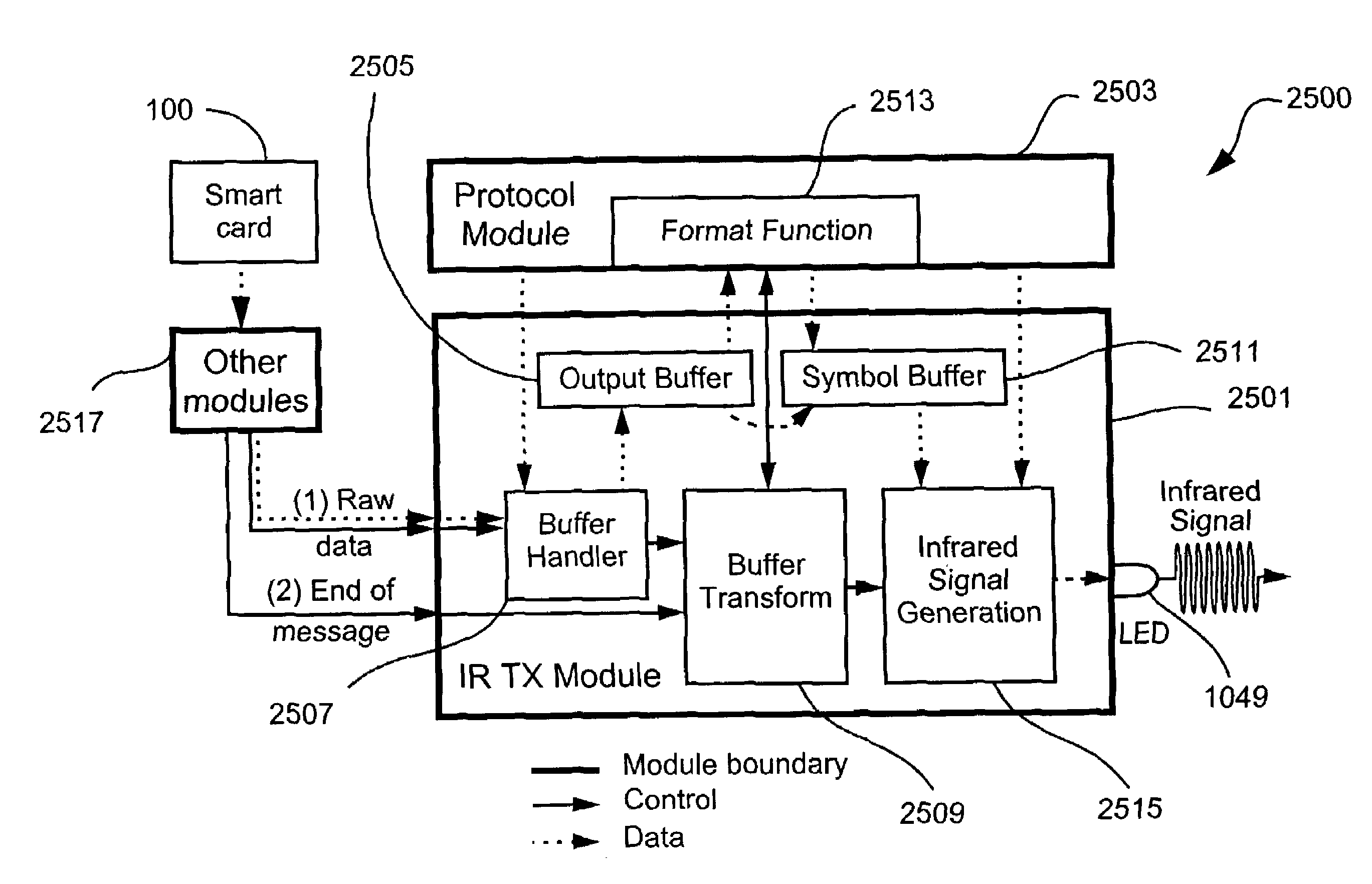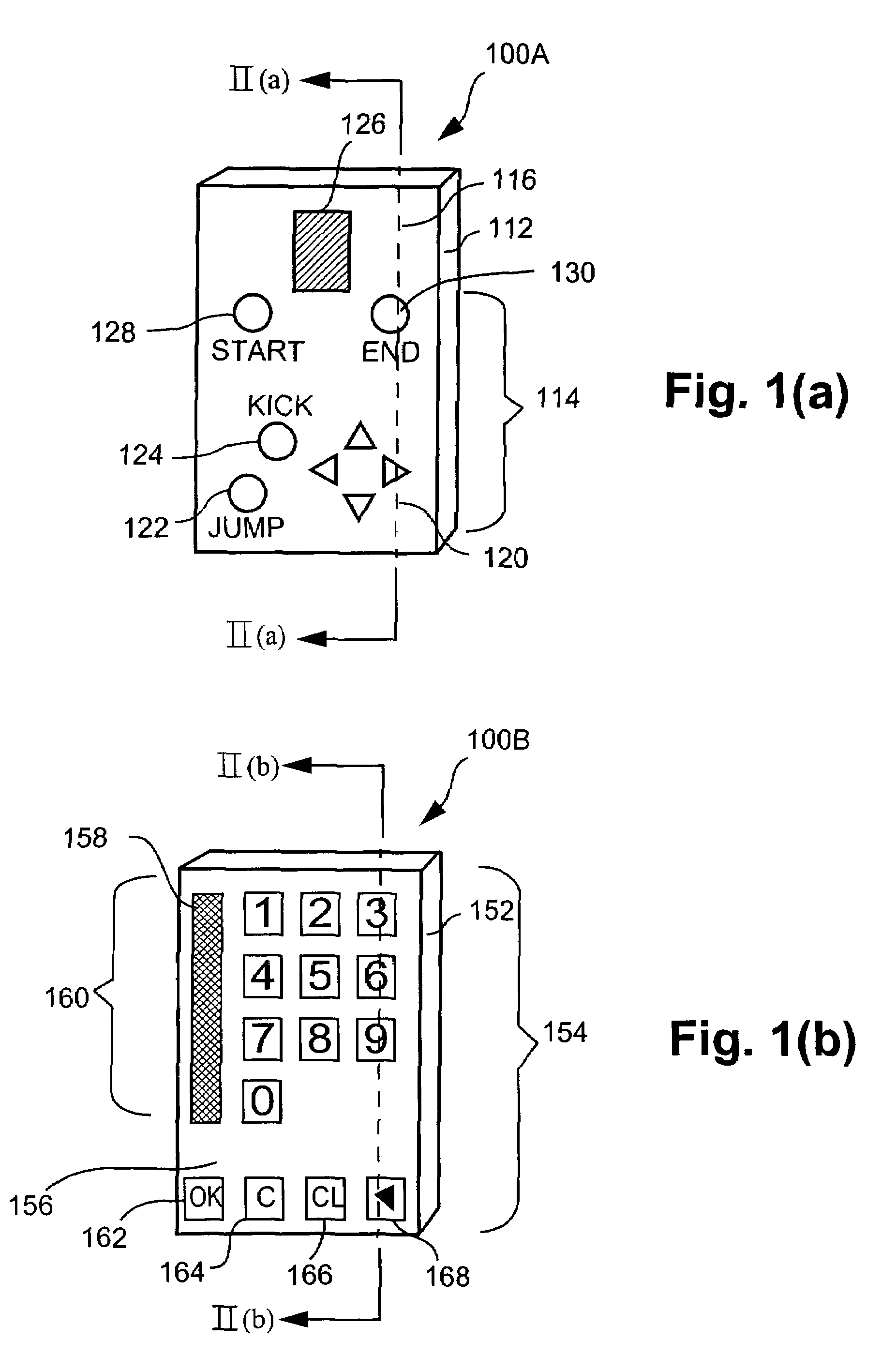User input device
a user input and input device technology, applied in the field of signal processing, can solve the problems of not being able to recognise such sequence bits, tedious and time-consuming programming of the remote control device using the method, and not being able to control all such appliances
- Summary
- Abstract
- Description
- Claims
- Application Information
AI Technical Summary
Benefits of technology
Problems solved by technology
Method used
Image
Examples
example 1
[0477]A typical cable television operator has many subscribers using set-top boxes (e.g. the set top box 601). The set top boxes are typically supplied to subscribers from different manufacturers and each set top box typically employs a different set of communication protocols to receive keyboard, mouse and remote control input. In order to deploy readers similar to the reader 300, which will work with these varying set top boxes, without conflicting with other devices (e.g., VCRs, remote controlled doors, air conditioners etc), different infrared protocols must be used and installed as part of the firmware on the readers.
[0478]Most cable television operators would prefer to have a single model of reader, such as the reader 300, with the same firmware stored thereon. Such a reader 300 can be transported to the subscriber, on subscription to the network, together with a card 100F, as shown in FIG. 54. The card 100F is configured for selecting a transmission protocol to be used by the...
example 2
[0491]FIG. 29 shows an example of another card 100E, similar to the card 100F described above. However, the card 100E is configured for selecting a transmission protocol to be used by the reader 300 in the system 600 and in particular in the system 600B. User interface elements 2914 of the card 100E are in the form of a “SET GLOBAL” button 2901, a “LOAD” button 2903, a “TEST” button 2905 and a “DELETE” button 2907, printed on a front face 2916 of the card 100E, for each of four particular protocols (i.e., RC5, Control-S, NEC and R-MAP as known to those in the relevant art) of a reader 300 or system 600. The labels on each of the user interface elements suggest the function of each of the elements 114 and will not be described in detail.
[0492]In this example, similar to Example 1 above, a user is provided with the card 100E of FIG. 29. The card 100E includes protocol modules for each of a set of protocols (i.e., RC5, Control-S, NEC and R-MAP as known to those in the relevant art) sto...
example 3
[0496]In another example, an operator wishes to upgrade the set top boxes owned by subscribers, some of whom already own a reader 300, to a new type of set-top box (e.g. a new and improved Vx-2000 series set top box). A technician can be assigned to each of the subscriber's homes or offices to install the new set top boxes. Unfortunately, the new type of set top boxes use a different set of infrared communication protocols to the current set top boxes. Preferably, those subscribers who own a reader 300 would not be required to be issued with a different reader capable of communicating with the new set top box. Therefore, the technician carries a special card 100G, as seen in FIG. 55, which is configured to enable reconfiguration of the reader 300 to use the different set of infrared communications protocols as soon as the card 100G is inserted in the reader 300.
[0497]The card 100G is similar to the cards 100E and 100F, described above, and is configured for selecting the transmissio...
PUM
 Login to View More
Login to View More Abstract
Description
Claims
Application Information
 Login to View More
Login to View More - R&D
- Intellectual Property
- Life Sciences
- Materials
- Tech Scout
- Unparalleled Data Quality
- Higher Quality Content
- 60% Fewer Hallucinations
Browse by: Latest US Patents, China's latest patents, Technical Efficacy Thesaurus, Application Domain, Technology Topic, Popular Technical Reports.
© 2025 PatSnap. All rights reserved.Legal|Privacy policy|Modern Slavery Act Transparency Statement|Sitemap|About US| Contact US: help@patsnap.com



